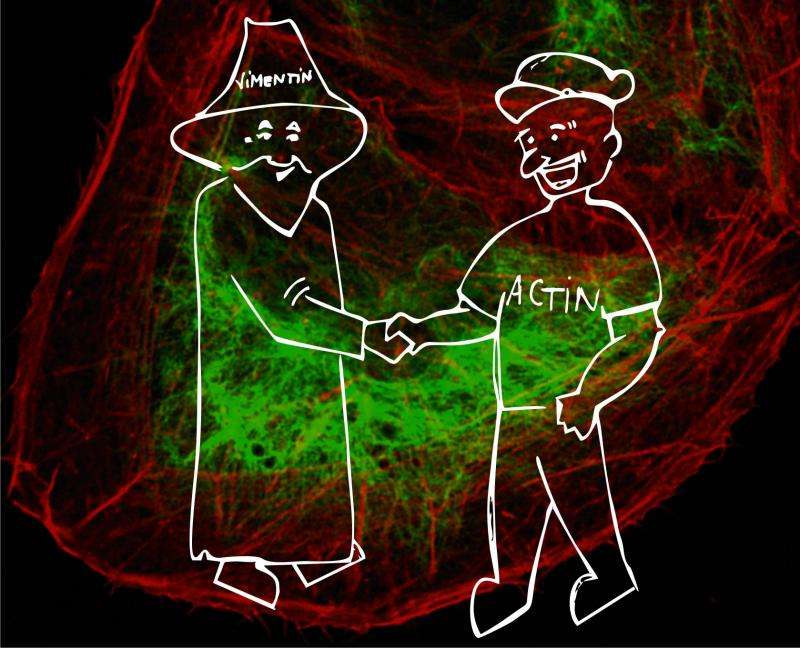Cultured human osteosarcoma cell, where actin filaments are visualized in red and vimentin intermediate filaments in green.
Animal cells harbor three types of cytoskeletal elements: actin filaments, intermediate filaments and microtubules. Despite their name, cytoskeletons are very dynamic structures, which undergo rapid reorganization in cells and thus contribute to numerous cellular processes, such as morphogenesis, motility, intracellular transport, and cell division. Consequently, defects in cytoskeletal structures lead to various diseases, including cancer and neurological disorders.
Different cytoskeletal systems do not function in isolation, but collaborate with each other in cells. Post-doctoral researcher Yaming Jiu working at the Institute of Biotechnology, University of Helsinki has now revealed that cytoplasmic intermediate filaments interact with specific contractile actin filament structures called arcs.
"Actin arcs transport intermediate filaments from cell periphery toward the nucleus. Consequently, disruption of actin arcs led to an abnormal spreading of the intermediate filament network toward the cell periphery and associated defects in cell morphogenesis. Intermediate filaments resist the movement of arcs, and their depletion led to abnormalities in the shape of the arc-rich leading edge of motile cells," describes research director Pekka Lappalainen.
More information: "Bidirectional Interplay between Vimentin Intermediate Filaments and Contractile Actin Stress Fibers." Cell Press 28 May 2015. DOI: dx.doi.org/10.1016/j.celrep.2015.05.008
Provided by University of Helsinki






















